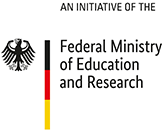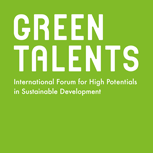PhD in Field Spectrometry, Hyperspectral Image Analysis and Applications
Current position: Assistant Professor at Department of Geography, Central University of Tamil Nadu, India
Research focus: remote sensing of wetlands
In 2016 Arun worked as a Visiting Scholar at the German Remote Sensing Data Center (DFD) at the German Aerospace Center (DLR). During that period, he along with his host Dr Claudia Künzer, Head DFD-DLR, wrote a proposal to apply for the prestigious Alexander von Humboldt International Climate Protection Fellowship. He was awarded the postdoctoral fellowship during the year 2017 and continued his postdoctoral research at DFD-DLR from March 2017 to May 2019.
On his return to India, he joined Central University of Tamil Nadu as a Faculty at the Department of Geography where he teaches Remote Sensing and GIS.
CV as submitted for the Green Talents award (2015):
Indian Institute of Space Science and Technology, India
Research focus: species level classification and biophysical characterisation of mangroves using hyperspectral remote sensing
With a background in Earth Remote Sensing and Geo-Information Technology, PhD student Arun Prasad Kumar’s research focus is Species Level Classification and Biophysical Characterisation of mangroves using Hyperspectral Remote Sensing.
Arun’s impressive academic background in Remote Sensing, Ecosystems and Forestry has included five scholarship awards in India from different award-granting institutions and a position as an academic research student at the Indian Institute of Space Science and Technology, Department of Space. Now in the fourth year of his doctoral studies in Hyperspectral Remote Sensing of Mangroves, Arun’s research involves interdisciplinary interests such as mangrove biology, ecosystem management, image classification, machine learning, and pattern recognition. His research focus also incorporates socio-economic awareness initiatives. These offer greater insight to the local community regarding the benefits of mangroves and implement discussions in the area of study. The final objective of the research is to understand the changing dynamics of different mangrove species in the ecosystem, their nature and the consequences of this change, using temporal hyperspectral images.
As a part of his research, Arun has conducted field surveys and collected spectral information from 34 different mangrove species. According to Arun, this new dataset would be helpful for future researchers to identify species by interpreting the spectral characteristics of hyperspectral satellite data. The professional goal of the research is to develop a model that automatically detects the species from hyperspectral satellite image based on the spectral library using pattern recognition and machine learning algorithms. His research work also relates to sustainable science in Germany. The airborne hyperspectral data has been used to a great extent in agricultural applications in Germany for the estimation of production, stress management and dynamics of invasive species in agriculture. This could be extended to forestry applications particularly in temperate forest mapping, fire damage estimation and the identification of illegal logging.
The jury particularly appreciated the way in which Arun’s research is both wide in scope and concrete in its application. His main aim in this mapping, to conserve forests in India, offers great potential for sustainable development.






